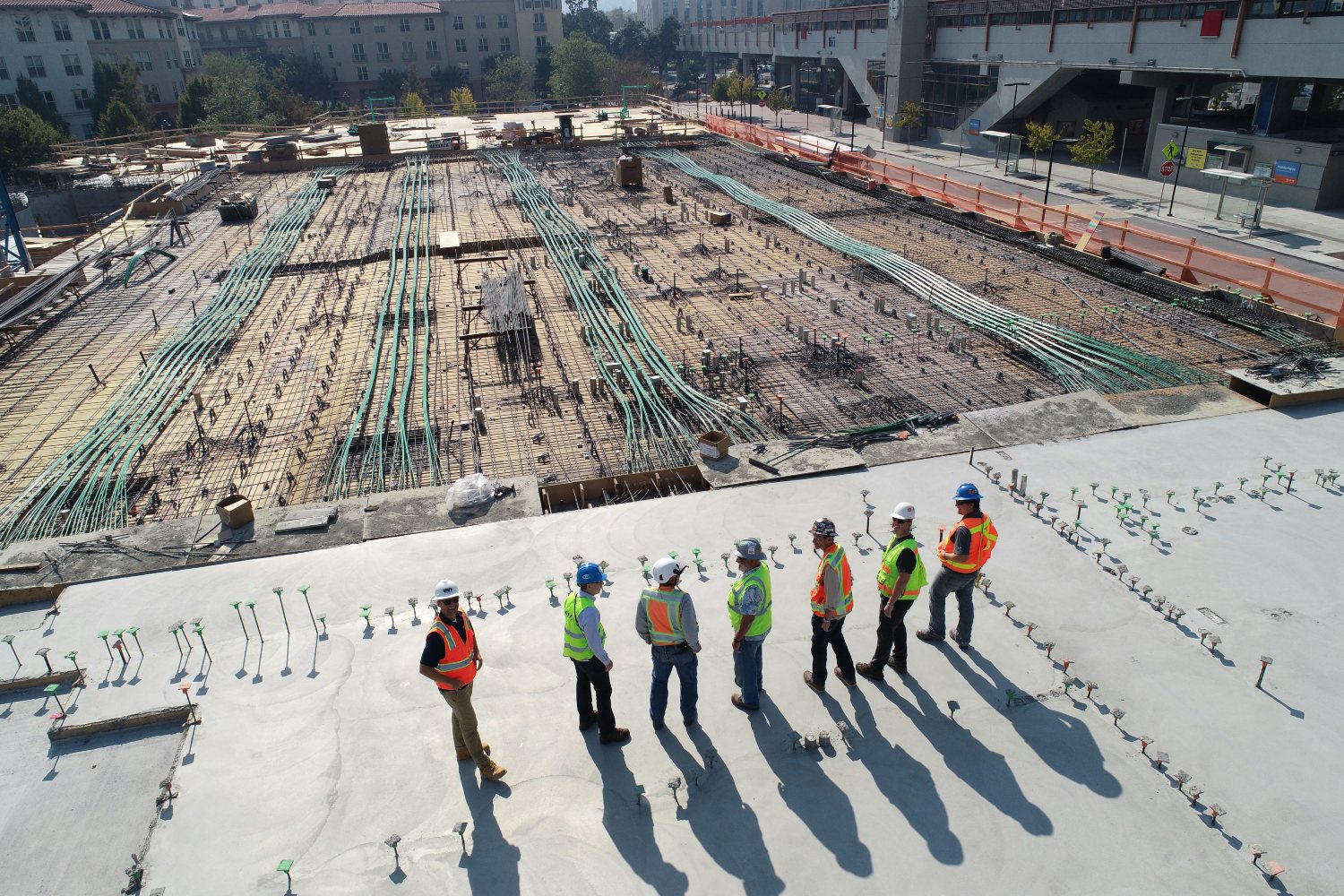How has the Building Safety Act 2022 affected insurance?
The Building Safety Act was granted Royal Assent in 2022. It addressed the safety concerns of high-rise tenants following the 2017 Grenfell Tower tragedy. The bill included implementation dates for measures and remediation works, some as late as 2024.
To learn more about the Building Safety Act – see our “What is the Building Safety Act 2022?” here.
Indeed, the Building Safety Act has led to a number of ramifications, mainly changing how contractors operate and their responsibilities – which subsequently affects public liability insurance. Ultimately, because of regulations involved in the Building Safety Act, we have seen an increase in legal disputes and claims, as well as important rulings which need to be evaluated.
We turn to our resident expert, Stuart Dobbins, Romero Insurance Technical Claims Director to explain more of the complex effects of the Building Safety Bill.

Why has there been an increase in Legal Disputes and claims for Contractors?
“There has been a significant rise in legal disputes concerning remediation work and other safety-related matters. This increase in disputes and orders has led to claims already in relation to building defects, safety issues and the cost of remediation work. This is a trend that is likely to continue.
“We may see insurers amending their policies to account for these increased risks, with the introduction of limits or onerous conditions/exclusions becoming considered as insurers seek to protect their risk exposure.”
“Likewise, policy holders may see increased premiums as insurers seek to enhance their reserves in expectation of large claims.”
How has the Building Safety Act affected historical claims?
“The extended limitation periods mean that historical documentation may be difficult to access and that project teams might have moved on.”
What is the ‘Duty to Warn’?
Contractors and designers have a duty to warn tenants and landlords about an increased risk of failure due to outdated designs. They must also inform their insurance provider as this may affect their public indemnity cover.
Stuart says, “The new ‘duty to warn’ exposure for designers raises the risk of claims arising from a failure to report non-compliance.”
How has the bill affected safety in existing buildings?
“There is a growing focus on safety in ‘existing’ occupied higher-risk buildings – not just new-builds. There is now increased scrutiny of the relevant ‘Accountable Persons’, and also upon managing the golden thread of information, and complying with orders from the Building Safety Regulator for building assessment certificates.”
“This could mean that there are more claims arising from safety issues that may have previously been overlooked. Insurers may also need to reassess their approach to their underwriting criteria and requirements for risk management in relation to buildings of this type.”
How will the new government affect building safety and insurance?
“The new Labour government has indicated their desire for an intensified push to complete remediation projects and increase investment in this area. However the potential introduction of a building safety levy may add financial obligations on new residential projects, which in turn could see increased financial pressure on developers and building owners.”
“When large sums are at risk in a building contract, there is an increased likelihood for claims to be made on actual or alleged defects. More investment also often results in new insurance products. During this time, insurers may become wary of new builds, especially while the details of the building safety levy are being finalised.”
What are the regulations on Second Staircases?
Buildings over 18 meters tall will require a second staircase, as of September 2026. Although this rule is not yet in effect, we expect to see claims of non-compliance as well as an increase in build costs.
“While not in effect until September next year, developers who don’t integrate this may find themselves facing increased premiums, and those that do may seek to insure against unexpected increases in costs arising from the new standards.”
Does the Building Safety Act apply in Scotland?
“Building safety regulations vary across the UK, with Scotland and Wales introducing their own changes. For example, only certain parts of the Building Safety Act, such as those related to construction and cladding products, apply in Scotland. These regional differences may mean that insurance policies have to be tailored to the specific geographic location of the building.”

Recent Building Safety Rulings
Stuart walks us through some Key Rulings which will impact the resolution of building safety claims:
1. BDW v Ardmore Construction – the application of adjudication to BSA cases
The dispute related to alleged fire safety defects on a development where Ardmore (the contractor) completed the works completed in or around 2003-2004. The contract was assigned from the original employer (Basingstoke property Company Limited) to BDW Trading Limited, who claimed that there were fire safety cladding defects present.
In a successful adjudication for BDW, it was found that Ardmore was liable for breaches of the contract and the Defective Premises Act.
These proceedings were disputed by Ardmore. They argued the term “under this contract” was adjudication, and also that the works were completed around 20 years ago, so a lack of documentation put Ardmore at an unfair position.
The disputes were unsuccessful, as Defective Premises Act claims should be deemed to fall under the scope of those adjudication provisions. And that contractors can now potentially face adjudication referrals on historic claims from projects as far back as 1992.
Therefore, the key learnings from the BDW v Ardmore Construction case are as follows:
- Adjudication vs. Arbitration: This decision facilitates a quicker and less costly method of dispute resolution (adjudication) compared to traditional arbitration. The ruling stated: “I find that there is no significance in the differing wording in the arbitration and adjudication provisions of this building contract.”
- Revival of Stale Claims: The ruling allows claims outside the traditional 12-year limitation period due to discovery of defects and the BSA 2022.
- Defective Premises Act: The ruling confirms that a breach of the Defective Premises Act 1972 is eligible for adjudication.
- Industry Impact: The ruling is expected to increase the use of adjudication and reduce court backlogs, impacting both housebuilders (claimants) and contractors (defendants). As Mark Pritchard, partner at Howard Kennedy, stated: “This is a hugely significant ruling for the construction industry as a whole and for any parties engaged in housebuilding… Crucially this ruling has confirmed that a party to a construction contract, who can bring an adjudication at any time, may do so after the usual contractual limitation periods expire.”
- Contractor Concerns: The ruling has raised concerns amongst contractors, particularly regarding fairness when adjudicating historical disputes. Ardmore Construction highlighted that the adjudicator’s decision is “only temporarily binding until the dispute is finally resolved by way of arbitration”. They also expressed disagreement with the adjudicator’s findings regarding “alleged deliberate concealment”
- Finality: It should be noted that while the ruling allows adjudication, the final resolution of such cases may still come from arbitration.
2. Ulster Garden Villages v Farrans – aligning Northern Ireland with the rest of the UK
A claim arising from extensive defects to the residential portion of the Victoria Square Development, Belfast, which led to the occupants of a total of 91 apartments being evacuated in April 2019. As the owner of 54 of the available apartments which it acquired in September 2011, UGV was the lead plaintiff in these proceedings, alongside some 29 others who had bought apartments in the development.
The first and second defendants were retained as building contractors. The third defendant was the architect and civil and structural engineer for the residential development.
The plaintiffs claimed that the defendants were in breach of their statutory duty, in particular, a breach of Article 3 of the Defective Premises (NI) Order 1975 (the DPO) and/or negligence by reason of alleged defective and deficient execution of the construction works.
The basic rule is that a claim under the DPO for breach may not be brought more than six years after the cause of action has accrued. The Judge found in favour of the defendants and the plaintiffs’ claim was stuck out as statute barred.
However, this outcome highlighted the disparity between Northern Ireland and England & Wales. The new Act (The Building Safety Act 2022) provides a 15-year limitation period for England and Wales and will apply retrospectively. A statement was issued recognising that the current provisions place Northern Ireland citizens at a disadvantage. An agreement was made to introduce legislation to address this disparity.
As such the agreement would appear to offer a lifeline to the plaintiffs in the Ulster Garden Villages case, offering a longer limitation period, and potentially permit a host of claims that would previously have been statute barred.
Therefore, the key learnings from the Ulster Garden Villages v Farrans case are as follows:
- Legislative Change: The Defective Premises Act (NI) 2024 was enacted to address a disparity between Northern Ireland and the rest of the UK concerning limitation periods for defective premises claims. The case of Ulster Garden Villages v Farrans highlighted the problem and acted as a catalyst for this change. The plaintiffs in this case were “victims of their postcode”.
- Extended Limitation Periods: The Act extends limitation periods to mirror the BSA 2022, with 15 years prospectively and 30 years retrospectively. “The effect of this bill once enacted will be to place parties in litigation in NI on the same statutory footing as litigants across the water.”
- Retrospective Application: The Act applies retrospectively, potentially reinstating previously time-barred claims.

What do Romero construction clients need to be aware of?
In light of the above information, Stuart highlights three key points clients need to remain aware of:
The Importance of Due Diligence
Stuart says: “Detailed record keeping and adherence to robust risk management protocols are now more critical than ever.”
The majority of the claims are on the basis that a company has not been sufficiently due diligent. In this time of change and uncertainty, construction businesses must be certain they are keeping records and are following standard procedures to remain protected.
Supply Chain Risks
Stuart says: “Firms must ensure that subcontractors maintain adequate insurance and should be mindful of supply chain risks.”
Types of supply chain risks include financial risks because of cost increases, operational risks such as shipping delays, and disruption risks from both geopolitical and climate factors. A multitude of international factors can disrupt the supply line, an therefore firms need comprehensive insurance in place to protect their finances and reputation.
Stay Up To Date
Stuart says: “It seems likely that there will be further developments in terms of policy construction and premiums, and we will keep clients updated as these arise.”
Policy updates and regulation changes are constant and will require an astute tie. Utilising a dedicated broker is all the more important for constructors and businesses. At Romero Insurance we have a dedicated team of industry experts and professionals, ready to service your needs as well as keep you updated on policy changes and risk management information which could impact your processes.
More Information with Romero Insurance
For more information about the Building Safety Bill, talk to us today.

